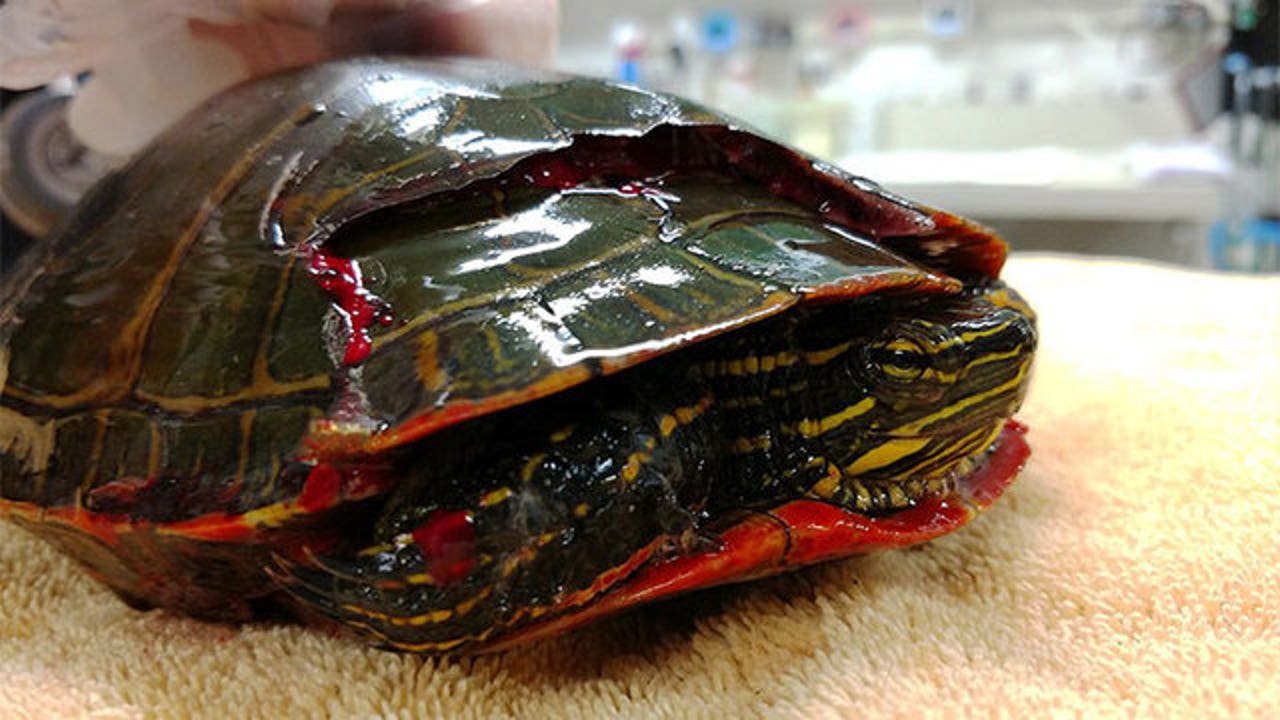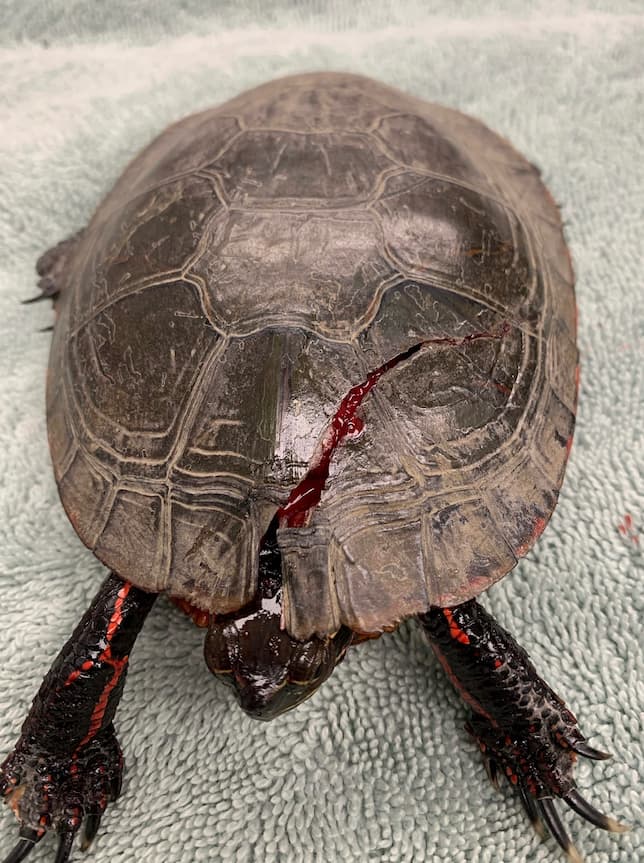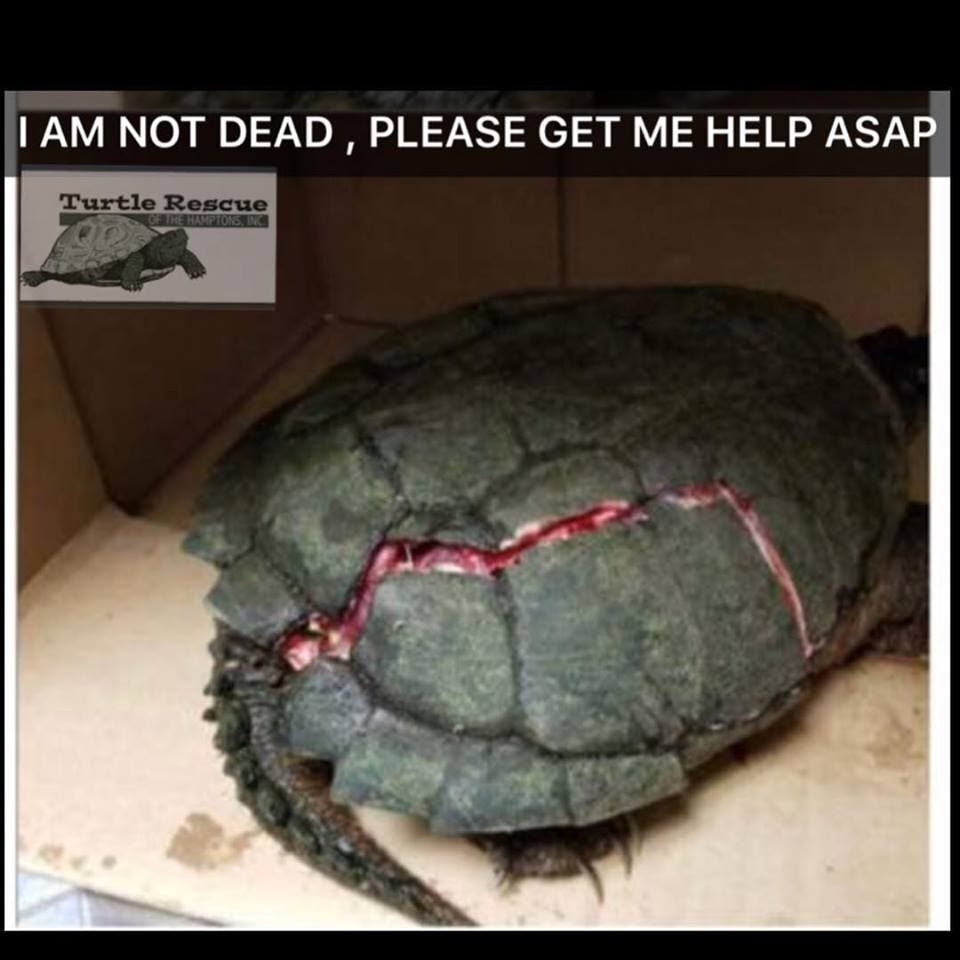A turtle can die with a cracked shell due to vulnerability to infections and predators. The shell is vital for protection and support in a turtle’s life.
Without proper care, a cracked shell can lead to serious health issues and even death. It is crucial to address any shell damage promptly to ensure the turtle’s well-being. In the wild, turtles rely on their shells for survival, making it essential to keep them intact.
Taking proactive steps to protect a turtle’s shell is necessary for their longevity and overall health. By understanding the importance of a turtle’s shell, we can help preserve these fascinating creatures in their natural habitats.

Credit: www.fox9.com
The Importance Of A Turtle’s Shell
The turtle’s shell is crucial for its survival, providing both protection and support. Let’s delve into the significance of a turtle’s shell, exploring how it safeguards the vital organs encased within.
Protection And Support
A turtle’s shell acts as a shield, safeguarding it from predators and environmental hazards.
Vital Organs Encased
The shell protects the turtle’s vital organs, including the heart, lungs, and liver, ensuring their safety.
Understanding Shell Cracks
Cracks in a turtle’s shell can be serious but don’t always lead to death. Depending on the severity, with proper care and treatment, turtles can survive and heal from shell cracks. Immediate attention and veterinary care are crucial for the turtle’s well-being.
Understanding Shell Cracks Shell cracks are a common concern for turtle owners, and understanding their causes and types is essential in ensuring the well-being of these remarkable creatures. While a cracked shell may not seem like a serious issue, it can have severe implications for a turtle’s health if left untreated. In this section, we will delve into the causes and types of shell cracks, shedding light on this critical aspect of turtle care.Causes Of Shell Cracks
Turtle shell cracks can result from various factors, including trauma, predation, and nutritional deficiencies. Trauma, such as being dropped or hit, can lead to fractures in the shell. Predation attempts by other animals can also cause damage to the shell, resulting in cracks. Additionally, inadequate nutrition, particularly a lack of calcium, can weaken the shell, making it more susceptible to cracking.Types Of Shell Cracks
There are several types of shell cracks that can affect turtles, including hairline fractures, partial cracks, and complete fractures. Hairline fractures are small, barely visible cracks that may not initially seem concerning but can worsen over time. Partial cracks involve damage to a portion of the shell, while complete fractures result in a full break across the shell. Each type of crack requires specific care and attention to ensure the turtle’s well-being. Understanding the causes and types of shell cracks is crucial for providing proper care to turtles. By addressing these issues promptly, turtle owners can help their pets recover and thrive.Implications Of A Cracked Shell
A cracked shell can be life-threatening for a turtle, leading to infections and vulnerability to predators. Immediate care and protection are crucial to prevent further harm and ensure the turtle’s survival. Prompt veterinary attention and a safe environment are essential for the turtle’s recovery and well-being.
A turtle’s shell is an essential part of its anatomy, providing protection and support to its body. However, a cracked shell can have severe implications for the turtle’s health and well-being. In this section, we will discuss the two main implications of a cracked shell: the risk of infection and the impact on mobility.Risk Of Infection
A cracked shell can expose a turtle’s internal organs to the outside environment, leaving them vulnerable to infection. Bacteria, parasites, and fungi can enter the cracks and cause severe damage to the turtle’s body. In some cases, the infection can be fatal. To prevent infections, it’s crucial to keep the turtle’s shell clean and dry. If you notice any cracks or damage to the shell, take the turtle to a veterinarian immediately. They will clean and disinfect the wound and prescribe antibiotics if necessary.Impact On Mobility
The shell plays a vital role in a turtle’s mobility. It provides support for the turtle’s limbs and muscles, allowing it to move freely and efficiently. A cracked shell can impair a turtle’s ability to move, making it difficult to find food, water, and shelter. In some cases, a cracked shell may require surgery to repair the damage. The veterinarian will use special techniques to stabilize the shell and allow it to heal properly. It’s essential to provide the turtle with a quiet and stress-free environment to aid in its recovery. In conclusion, a cracked shell can have severe implications for a turtle’s health and well-being. It’s crucial to take immediate action if you notice any damage to the shell. By doing so, you can prevent infections and ensure that the turtle can move freely and efficiently.
Credit: vetmed.illinois.edu
Treatment Options For A Turtle’s Cracked Shell
A cracked shell can be a serious issue for a turtle, but it doesn’t always mean certain death. There are treatment options available, such as shell repair and wound care, that can help the turtle survive and heal from its injuries.
Prompt veterinary care is crucial in these cases to ensure the best possible outcome for the turtle’s recovery.
Treatment Options for a Turtle’s Cracked Shell Professional Veterinary Care If your turtle has a cracked shell, seek professional veterinary care immediately. A veterinarian with experience treating reptiles can assess the severity of the injury and provide the necessary treatment. The vet may clean the wound, apply shell repair materials, and provide pain relief medication to ensure the turtle’s comfort during the healing process. Home Care Measures In addition to professional veterinary care, there are also home care measures you can take to aid in the turtle’s recovery. It’s crucial to keep the turtle in a clean and safe environment to prevent infection and further damage to the shell. Ensure that the turtle has access to clean water for soaking and drinking, and maintain proper temperature and humidity levels in its habitat. It’s essential to handle the turtle with care and avoid putting pressure on the injured shell. You can also provide a balanced diet to support the turtle’s overall health and healing process. Keep a close eye on the turtle’s behavior and physical condition, and seek veterinary assistance if you notice any concerning changes. By combining professional veterinary care with attentive home care measures, you can give your turtle the best chance of recovery from a cracked shell. Remember to follow the veterinarian’s guidance and monitor the turtle’s progress closely to ensure a successful healing process.Factors Affecting Survival
A turtle with a cracked shell may survive if the injury isn’t severe enough to affect vital organs. Factors like size, location, and prompt veterinary care greatly influence the turtle’s chance of survival. Immediate attention and proper treatment are crucial in determining the outcome.
Factors Affecting Survival When a turtle’s shell cracks, several factors come into play that determine its chances of survival. The size and species of the turtle, as well as the location and severity of the crack, play crucial roles in whether the turtle will recover from its injury. Size and Species of Turtle The size and species of the turtle directly impact its ability to survive a cracked shell. Smaller turtles may have a better chance of survival as their smaller bodies are often more adaptable to injuries. Additionally, certain species of turtles have natural defenses and healing abilities that can aid in their recovery from a cracked shell. Location and Severity of the Crack The location and severity of the crack are critical in determining the turtle’s survival. A crack closer to the edges of the shell is less likely to cause life-threatening damage compared to a crack near the spine or vital organs. Additionally, the severity of the crack, whether it is a hairline fracture or a gaping wound, significantly impacts the turtle’s chances of survival. In conclusion, the size and species of the turtle, along with the location and severity of the crack, are pivotal factors in determining whether a turtle will survive with a cracked shell. Understanding these factors can help in providing the necessary care and support for injured turtles, increasing their chances of recovery.Case Studies Of Turtles With Cracked Shells
Explore case studies on turtles with cracked shells to uncover whether this condition is fatal. Discover how these resilient creatures adapt and survive, shedding light on the impact of cracked shells on their overall health and longevity.
Turtles are known for their hard shells that protect them from predators. However, despite their tough exterior, turtles can still suffer from cracked shells, which can be caused by various factors. In this section, we will examine some case studies of turtles with cracked shells, including their recovery stories and the challenges they faced.Recovery Stories
One notable case of a turtle with a cracked shell is Rocky, a red-eared slider who was found abandoned in a park with a severely damaged shell. Fortunately, Rocky was taken to a rehabilitation center where he received medical attention and care. After several months of treatment, Rocky’s shell healed, and he was eventually released back into the wild. Another inspiring recovery story is that of Sheldon, a box turtle who was hit by a car and left with a severely cracked shell. Sheldon was taken to a wildlife rehabilitation center, where he received surgery to repair his shell. Despite the odds, Sheldon’s shell healed, and he was able to return to his natural habitat.Challenges Faced
While turtles with cracked shells can recover with proper care, they often face several challenges during their healing process. One of the biggest challenges is the risk of infection, as the cracked shell can expose the turtle to harmful bacteria and parasites. To mitigate this risk, turtles with cracked shells require close monitoring and regular cleaning of their shells. Another challenge for turtles with cracked shells is the difficulty they face in moving around and finding food. A cracked shell can limit a turtle’s mobility, making it challenging for them to navigate their environment and find food. In some cases, turtles with cracked shells may require specialized diets or even assistance in finding food. In conclusion, while a cracked shell can pose significant challenges for turtles, with proper care and treatment, turtles can recover and return to their natural habitat. The recovery stories of Rocky and Sheldon serve as a testament to the resilience of these amazing creatures and the importance of protecting them and their habitats.Conservation Efforts For Turtle Protection
Conservation efforts for turtle protection play a crucial role in ensuring the survival of these majestic creatures. With the increasing threats to their habitat and well-being, concerted efforts are being made to preserve and protect turtles from harm. These efforts encompass various initiatives, including habitat preservation, education and awareness programs, and more.
Habitat Preservation
Habitat preservation is one of the key strategies in turtle conservation. By safeguarding their natural environments, such as wetlands, beaches, and nesting sites, organizations can help ensure that turtles have a safe place to thrive and reproduce. This involves implementing measures to mitigate habitat destruction, pollution, and encroachment by human activities.
Education And Awareness Programs
Education and awareness programs are instrumental in instilling a sense of responsibility and understanding of the importance of turtle conservation. By engaging communities, schools, and the general public, these programs aim to raise awareness about the threats facing turtles and the actions individuals can take to protect them. This includes advocating for responsible fishing practices, reducing plastic pollution, and supporting conservation initiatives.

Credit: vetspace.2ndchance.info
Conclusion
In the event of a cracked shell, a turtle’s survival depends on the severity of the injury. Providing immediate care and consulting a veterinarian is crucial for their recovery. It’s important to handle turtles with care and take preventive measures to avoid shell injuries.
Understanding the significance of shell health is vital for the well-being of these fascinating creatures.






Leave a Reply